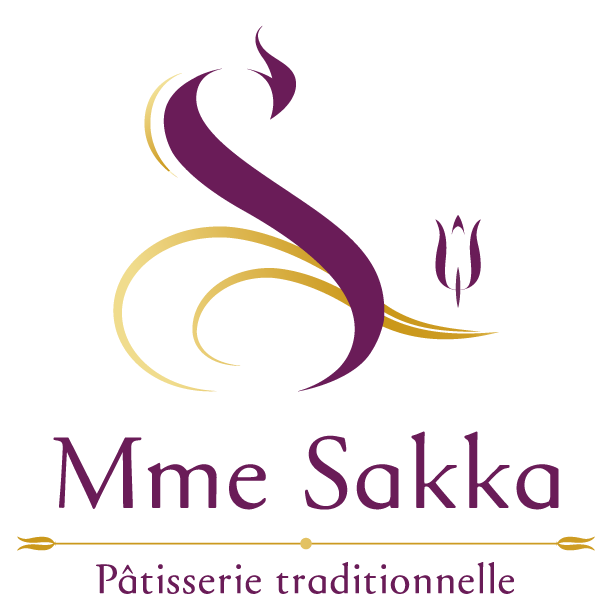The reference of our identity is the traditional Baklawa
The baklawa is the sultan of cakes and the cake of the sultans! For this reason the reference of our identity is the traditional Baklawa.

The guests of the Turkish sultan tasting the baklawa
Referring to history, baklawa, baklava or baclava (from the Greek « μπακλαβα », from the Persian Bashlavâ) is a traditional dessert common to all peoples of the former Byzantine Empire, Persia and the former Empire Ottoman. It is the national cake in Bulgaria, Greece, Turkey and in the kitchens of the Balkans (Albania, Bosnia, Serbia, Croatia and Romania), of the Middle East and also the Eastern Maghreb (Algeria, Tunisia). This dessert is also very common among Georgians, Armenians and Cypriots.
Its existence in the present form is attested under the Ottoman Empire in the imperial kitchens of the palace of Topkapi in Istanbul where the sultan offered shares of baklava to the janissaries every fifteenth day of the month of Ramadan during a ceremony baptized Baklava Alay

Ottoman miniature depicting the Baklava Alay ceremony
If the name is substantially similar, revenue and composition vary by geography, so each country or region holds its own baklawa. It is based on pistachios or hazelnuts in Turkey and in the Middle East, based on almonds and honey in the Maghreb and on the basis of nuts in the countries of Balkan.

Preparation of the baklava at the palace of the sultans
It also seems that it was during the Byzantine period that its trade and its recipe spread. The layers of paste that constitute it are traditionally in the number of 33, in reference to the years of Christ’s life. In Romania, baklava was introduced in the eighteenth century, along with millet beer, nougat and rahat, by the Phanariot traders. The baklava is prepared in Romania for the festivities of the day of the year and the summer.

Tunisia
Coming from the east, carried by conquests, it was certainly the sweetest of victories. This peaceful conqueror who comes to us from the Ottoman Empire is the Tunisian Baklava. The Tunisian Baklava is pronounced Baklawa, it is a laminated with almonds and honey syrup. This cake would have been inspired by the Turkish baklava during the Ottoman regency and would have been present for more than 300 years. It is distinguished by its composition and its atypical foliage. It is a long dessert to be made because it consists of thin sheets of pastry dried finely ground and crushed fruit is placed between the leaves, which are then cooked and soaked in sugar water (with lemon juice to avoid caramel) , Honey or water of orange blossom or rose. In Tunisia, the traditional Baklawa is one of the most popular Tunisian cakes. It is the queen of wedding celebrations. This pastry has known well through time and civilizations.
Over the generations, the original background has been elaborated refined, adapted and the pupil surpassing the master, the Tunisian pastry makers have no longer to envy to their grandmothers.

Tunisian woman preparing Baklawa
Ramadhan and the approach of Eid are propitious to the evocation of these sweets of the palate.
But not only because pastry and sweets accompanying every feast and every celebration. In Sfax learning recipes was a custom and for a very long time a sign of nobility and fidelity to the traditions. Whenever relatives gather in the « BORJ » or the so-called « EDDAR EL ARBI » (Arab house), the opportunity is good to test the recipes and savor new sweets.

Women preparing cakes before the Aid in an « Arabic house » in Sfax
Loyal to the craft of Hlou arbi – traditional cakes, Madam SAKKA has never ceased to live and share her love of creation and her quest for perfection.
Its creative dimension is expressed through a strong brand image, clearly affirming its leading position in luxury Baklawa.

Tugra: signature of the sultan

Tulip: symbol of the sultans

Logo of Madam SAKKA Pastry
Since the creation of its pastry, its cakes are aimed at the public who knows how to appreciate these rare and subtle flavors, born of centuries of tradition and rigor.
The secret of its success and the sustainable development of its company is the result of an approach consisting in giving a unique and innovative character to its products while remaining faithful to the tradition
The brand embodies today the elegance, the creative impetus of Tunisian luxury, full of pleasure, enthusiasm and passion.



